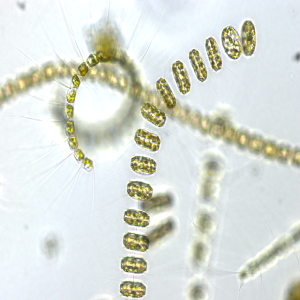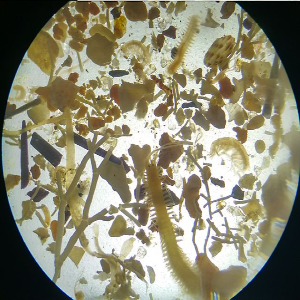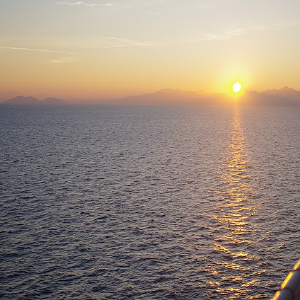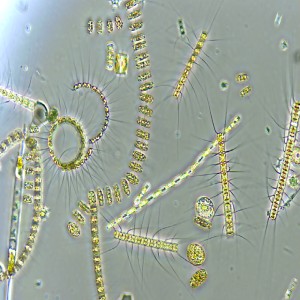A transnational marine ecological observatory in the Adriatic Sea to harmonize a fragmented approach to monitoring and conservation
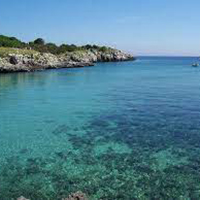
Accepted: 24 June 2021
Supplementary: 102
HTML: 19
All claims expressed in this article are solely those of the authors and do not necessarily represent those of their affiliated organizations, or those of the publisher, the editors and the reviewers. Any product that may be evaluated in this article or claim that may be made by its manufacturer is not guaranteed or endorsed by the publisher.
The design and establishment of Marine Ecological Observatories (MEOs) are fostered at the European level. MEOs should adopt a holistic view, integrating and harmonizing long-term oceanographic and ecological research and monitoring, and increasing conservation strategies effectiveness according to the ecological connectivity concept. The data and knowledge collected and made available through MEOs should inform policies dealing with conservation and management of the marine environment. We present and discuss these issues in the Adriatic Sea context, where the transnational ecological observatory “ECOAdS” is under development in the framework of the Interreg Italy-Croatia project ECOSS (Observing System in the Adriatic Sea: oceanographic observations for biodiversity), which aims to support Natura 2000 network implementation and cross-border coordination of multiple monitoring initiatives. We analyse the main EU directives that deal with marine conservation, notably the Habitats and Birds directives, the Water Framework Directive, and the Marine Strategy Framework Directive, as they are the primary instruments that can guide the development of the observatory while strengthening cooperation at the basin scale. We bring out the synergies and discrepancies among these legal instruments, and build on them ECOAdS as a monitoring platform that may respond and contribute to their requirements, boosting the synergies and overcoming the weaknesses. Finally, we provide some hints for the further development of this transnational MEO as a collector of the existing monitoring efforts aimed at harmonizing their approaches and incorporating the ecological connectivity to foster an ecosystem-based approach to conservation management.
Acri F, Bastianini M, Bernardi Aubry F, Camatti E, Boldrin A, et al., 2020. A long-term (1965–2015) ecological marine database from the LTER-Italy Northern Adriatic Sea site: plankton and oceanographic observations. Earth Syst. Sci. Data 12:215-230.
Aguzzi J, Iveša N, Gelli M, Costa C, Gavrilovic A, et al., 2020. Ecological video monitoring of Marine Protected Areas by underwater cabled surveillance cameras. Mar. Pol. 119:104052.
Allan IJ, Vrana B, Greenwood R, Mills GA, Roig B, Gonzalez C, 2006. A “toolbox” for biological and chemical monitoring requirements for the European Union's Water Framework Directive. Talanta 69:302-322.
Azzurro E, Ben Souissi SJ, Boughedir W, Castriota L, Deidun A, et al. 2014. The Sicily Strait: a transnational observatory for monitoring the advance of non indigenous species. Biol. Mar. Mediterr. 21:105-106.
Berners-Lee T, Fischetti M, 2000. Weaving the web: The original design and ultimate destiny of the world wide web by its inventor. Harper: San Francisco.
Bastari A, Micheli F, Ferretti F, Pusceddu A, Cerrano C, 2016. Large marine protected areas (LMPAs) in the Mediterranean Sea: the opportunity of the Adriatic Sea. Mar. Pol. 68:165-177.
Bax NJ, Appeltans W, Brainard R, Duffy JE, Dunstan P, et al., 2018. Linking capacity development to GOOS monitoring networks to achieve sustained ocean observation. Front. Mar. Sci. 5:346.
Benedetti-Cecchi L, Crowe T, Boehme L, Boero F, Christensen A, et al., 2018. Strengthening Europe's capability in biological ocean observations. Future Science Brief 3 of the European Marine Board: Ostend. Available from: https://marineboard.eu/sites/marineboard.eu/files/public/publication/EMB_FSB3_Biological_Ocean_Observation.pdf
Biermann F, Kanie N, Kim RE, 2017. Global governance by goal-setting: the novel approach of the UN Sustainable Development Goals. Curr. Opin. Env. Sust. 26-27:26–3.
Borja A, 2005. The European Water Framework Directive: a challenge for nearshore, coastal and continental shelf research. Cont. Shelf Res. 25:1768-1783.
Borja Á, Elliott M, Carstensen J, Heiskanen AS, van de Bund W, 2010. Marine management–towards an integrated implementation of the European Marine Strategy Framework and the Water Framework Directives. Mar. Pollut. Bull. 60:2175-2186.
Carr MH, Neigel JE, Estes JA, Andelman S, Warner RR, Largier JL, 2003. Comparing marine and terrestrial ecosystems: implications for the design of coastal marine reserves. Ecol. Appl. 13:90-107.
Carr MH, Woodson CB, Cheriton OM, Malone D, McManus MA, Raimondi PT, 2011. Knowledge through partnerships: integrating marine protected area monitoring and ocean observing systems. Front. Ecol. Environ. 9:342-350.
Claudet J, Loiseau C, Sostres M, Zupan M, 2020. Underprotected marine protected areas in a global biodiversity hotspot. One Earth 2:380-384.
Cossarini G, Querin S, Solidoro C, 2015. The continental shelf carbon pump in the northern Adriatic Sea (Mediterranean Sea): Influence of wintertime variability. Ecol. Model. 314:118-134.
Costello C, Molina R, 2021. Transboundary marine protected areas. Resour. Energy Econ. 65;101239.
Crise A, Ribera d’Alcalà M, Mariani,P, Petihakis G, Robidart J, et al., 2018. A conceptual framework for developing the next generation of Marine OBservatories (MOBs) for science and society. Front. Mar. Sci. 5:318.
DG Environment, 2017. Reporting under Article 17 of the Habitats Directive: Explanatory notes and guidelines for the period 2013-2018. Available from: http://www.reportingdirettivahabitat.it/public/documents/documenti%20ufficiali%20europei/Reporting%20guidelines.pdf
Dias E, Morais P, Cotter AM, Antunes C, Hoffman JC, 2016. Estuarine consumers utilize marine, estuarine and terrestrial organic matter and provide connectivity among these food webs. Mar. Ecol. Prog. Ser. 554:21-34.
Dodds WK, Clements WH, Gido K, Hilderbrand RH, King RS, 2010. Thresholds, breakpoints, and nonlinearity in freshwaters as related to management. J. N. Am. Benthol. Soc. 29:988-997.
Drius M, Bongiorni L, Depellegrin D, Menegon S, Pugnetti A, Stifter S, 2019. Tackling challenges for Mediterranean sustainable coastal tourism: An ecosystem service perspective. Sci. Total Environ. 652:1302-1317.
Duffy JE, Amaral-Zettler LA, Fautin DG, Paulay G, Rynearson TA, et al., 2013. Envisioning a marine biodiversity observation network. Bioscience 63:350-361.
Dunham A, Dunham JS, Rubidge E, Iacarella JC, Metaxas A, 2020. Contextualizing ecological performance: Rethinking monitoring in marine protected areas. Aquat. Conserv. 30:2004-2011.
European Commission, 1992. Council Directive 92/43/EEC of May 21 1992 on the conservation of natural habitats and of wild fauna and flora. Official Journal of the European Communities.
European Commission, 2000. Directive 2000/60/EC of the European Parliament and of the Council of 23 October 2000 establishing a framework for Community action in the field of water policy (Water Framework Directive). Official Journal of the European Union.
European Commission, 2008. Directive 2008/56/EC of the European Parliament of the Council of 17 June 2008 establishing a framework for community action in the field of marine environmental policy (Marine Strategy Framework Directive). Official Journal of the European Union.
European Commission, 2009. Directive 2009/147/EC of the European Parliament and of the Council of 30 November 2009 on the conservation of wild birds. Official Journal of the European Union.
European Commission, 2012. FAQ final 2012-07-27. Links between the Marine Strategy Framework Directive (MSFD 2008/56/EC) and the Nature Directives (Birds Directive 2009/147/EEC (BD) and Habitats Directive 92/43/EEC (HD)) https://ec.europa.eu/environment/nature/natura2000/marine/docs/FAQ%20final%202012-07-27.pdf
European Commission, 2014. Report from the Commission to the European Parliament, the Council, the European Economic and Social Committee of the Regions concerning the governance of macroregional strategies. Document 52014DC0284.
European Commission, 2016a. Reporting under Article 17 of the Habitats Directive. Report format for the period 2013–2018, Final Version – November 2016. Available from: http://cdr.eionet.europa.eu/help/habitats_art17/index_html
European Commission, 2016b. European Commission: Open innovation, open science, open to the world – a vision for Europe. Available from: https://op.europa.eu/en/publication-detail/-/publication/3213b335-1cbc-11e6-ba9a-01aa75ed71a1/language-en
European Commission, 2017. Commission Directive 2017/845 of 17 May 2017 amending Directive 2008/56/EC of the European Parliament and of the Council as regards the indicative lists of elements to be taken into account for the preparation of marine strategies. Document 32017L0845.
European Commission, 2017. Commission Decision 2017/848 of 17 May 2017 laying down criteria and methodological standards on good environmental status of marine waters and specifications and standardised methods for monitoring and assessment, and repealing Decision 2010/477/EU. Document 32017D0848.
European Commission, 2017. Communication from the commission to the European parliament, the council, the European economic and social committee and the committee of the regions an Action Plan for nature, people and the economy. Available from: https://op.europa.eu/en/publication-detail/-/publication/bb26e7d1-2b26-11e7-9412-01aa75ed71a1
European Environment and Sustainable Development Advisory Councils (EEAC), 2018. Working Group on Fresh Water Affair 2018. The EU Water Framework Directive. Results to date and outlook for the future. Available from: https://eeac.eu/wp-content/uploads/2018/09/The-EU-Water-Framework-Directive-Results-to-date-and-outlook-for-the-future.pdf
Evans, D, 2012. Building the European union’s Natura 2000 network. Nat. Conserv. 1:11.
Farella G, Menegon S, Fadini A, Depellegrin D, Manea E, et al., 2020. Incorporating ecosystem services conservation into a scenario-based MSP framework: An Adriatic case study. Ocean. Coast. Manag. 193:105230.
Gissi E, McGowan J, Venier C, Di Carlo D, Musco F, et al., 2018. Addressing transboundary conservation challenges through marine spatial prioritization. Conserv. Biol. 32:1107-1117.
Grodzińska-Jurczak M, Strzelecka M, Kamal S, Gutowska J, 2012. Effectiveness of Nature Conservation–a case of Natura 2000 sites in Poland. In: Sladonja B (ed.), Protected area management. IntechOpen.
Intergovernmental Oceanographic Commission of UNESCO, 2019. Ocean Data Standards, Vol.4: SeaDataNet Controlled Vocabularies for describing Marine and Oceanographic Datasets - A joint Proposal by SeaDataNet and ODIP projects. (IOC Manuals and Guides, 54, Vol. 4.) 31 pp. (IOC/2019/MG/54 Vol.4). Ostend: IODE/UNESCO.
International Organization for Standardization, 2011. ISO 25964-1:2011. Information and Documentation - Thesauri and Interoperability with Other Vocabularies - Part 1: Thesauri for Information Retrieval. Geneva: International Organization for Standardization.
International Organization for Standardization, 2013. Norm ISO 25964-2:2013. Information and Documentation - Thesauri and Interoperability with Other Vocabularies - Part 2: Interoperability with Other Vocabularies. Geneva: International Organization for Standardization.
Jonsson PR, Hammar L, Wåhlström I, Pålsson J, Hume D, et al., 2021. Combining seascape connectivity with cumulative impact assessment in support of ecosystem‐based marine spatial planning. J. Appl. Ecol. 58:576-586.
Kallis G, Butler D, 2001. The EU water framework directive: measures and implications. Water Pol. 3:125-142.
Kati V, Hovardas T, Dieterich M, Ibisch PL, Mihok B, Selva N, 2015. The challenge of implementing the European network of protected areas Natura 2000. Conserv. Biol. 29:260-270.
Long R, 2011. The Marine Strategy Framework Directive: a new European approach to the regulation of the marine environment, marine natural resources and marine ecological services. J. Energy Nat. Resour. Law 29:1-44.
Mack L, Attila J, Aylagas E, Beermann A, Borja A, et al., 2020. A synthesis of marine monitoring methods with the potential to enhance the status assessment of the Baltic Sea. Front. Mar. Sci. 7:823.
Mackelworth P, 2012. Peace parks and transboundary initiatives: implications for marine conservation and spatial planning. Conserv. Lett. 5:90-98.
Manea E, Di Carlo D, Depellegrin D, Agardy T, Gissi E, 2019. Multidimensional assessment of supporting ecosystem services for marine spatial planning of the Adriatic Sea. Ecol. Indic. 101:821-837.
Manea E, Bongiorni L, Bergami C, Pugnett, A, 2020. Challenges for marine ecological observatories to promote effective GMS of Natura 2000 network. The case study of ECOAdS in the Adriatic Sea, p. 23-39. In: Alfaré L, Ruoss E (eds.), Governing future challenges in protected areas. CNR Edizioni.
Maxwell SM, Hazen EL, Lewison RL, Dunn DC, Bailey H, et al., 2015. Dynamic ocean management: Defining and conceptualizing real-time management of the ocean. Mar. Pol. 58:42-50.
McQuatters-Gollop A, Mitchell I, Vina-Herbon C, Bedford J, Addison PFR, et al., 2019. From science to evidence–how biodiversity indicators can be used for effective marine conservation policy and management. Front. Mar. Sci. 6:109.
Mee LD, Jefferson RL, Laffoley DDA, Elliott M, 2008. How good is good? Human values and Europe’s proposed Marine Strategy Directive. Mar. Pollut. Bull. 56:187-204.
Micheli F, Halpern BS, Walbridge S, Ciriaco S, Ferretti F, et al., 2013. Cumulative human impacts on Mediterranean and Black Sea marine ecosystems: assessing current pressures and opportunities. PloS One 8:e79889.
Milliman JD, Bonaldo D, Carniel S, 2016. Flux and fate of river-discharged sediments to the Adriatic Sea. Adv. Oceanogr. Limnol. 7:5899.
Miloslavich P, Bax NJ, Simmons SE, Klein E, Appeltans W, et al., 2018. Essential ocean variables for global sustained observations of biodiversity and ecosystem changes. Glob. Change Biol. 24:2416-2433.
Muelbert JH, Nidzieko NJ, Acosta AT, Beaulieu SE, Bernardino AF, et al., 2019. ILTER–The International Long-Term Ecological Research Network as a platform for global coastal and ocean observation. Front. Mar. Sci. 6:527.
Muller-Karger FE, Miloslavich P, Bax NJ, Simmons S, Costello MJ, et al., 2018. Advancing marine biological observations and data requirements of the complementary essential ocean variables (EOVs) and essential biodiversity variables (EBVs) frameworks. Front. Mar. Sci. 5:211.
O’Hagan AM, 2020. Ecosystem-based management (EBM) and ecosystem services in EU law, policy and governance, p. 353-372. In: O’Higgins T, Lago M and DeWitt T (eds.), Ecosystem-based management, ecosystem services and aquatic biodiversity. Cham: Springer.
Pereira HM, Ferrier S, Walters M, Geller GN, Jongman RHG, et al., 2013. Essential biodiversity variables. Science 339:277–278.
Portman ME, Teff-Seker Y, 2017. Factors of success and failure for transboundary environmental cooperation: projects in the Gulf of Aqaba. J. Environ. Policy Plan 19:810-826.
Rayner R, Jolly C, Gouldman C, 2019. Ocean observing and the blue economy. Font. Mar. Sci. 6:330.
Ravaioli M, Bergami C, Riminucci F, Langone L, Cardin V, et al., 2016. The RITMARE Italian Fixed-Point Observatory Network (IFON) for marine environmental monitoring: a case study. J. Oper. Oceanogr. 9:202–214.
Reyers B, Stafford-Smith M, Erb KH, Scholes RJ, Selomane O, 2017. Essential variables help to focus sustainable development goals monitoring. Curr. Opin. Environ. Sustain. 26:97-105.
Rouillard J, Lago M, Abhold K, Röschel L, Kafyeke T, et al., 2018. Protecting aquatic biodiversity in Europe: How much do EU environmental policies support ecosystem-based management? Ambio 47:15-24.
Scarcella G, Grat, F, Raicevich S, Russo T, Gramolini R, et al., 2014. Common sole in the northern and central Adriatic Sea: spatial management scenarios to rebuild the stock. J. Sea Res. 89:12-22.
Schmeller DS, Weatherdon LV, Loyau A, Bondeau A, Brotons L, et al., 2018. A suite of essential biodiversity variables for detecting critical biodiversity change. Biol. Rev. 93:55-71.
She J, Allen I, Buch E, Crise A, Johannessen A, et al., 2016. Developing European operational oceanography for Blue Growth, climate change adaptation and mitigation, and ecosystem-based management. Ocean Sci 12:953–976.
Šepić J, Vilibic I, 2011. The development and implementation of a real-time meteotsunami warning network for the Adriatic Sea. Nat. Hazards Earth Syst. Sci. 11:83-91.
Šepić J, Vilibic I, Denamiel C, Mihanović H, Muslim S, et al., 2017. Towards understanding and operational early warning of the Adriatic meteotsunamis: Project MESSI. Proceedings 1st Workshop on Waves, Storm Surges and Coastal Hazards.
Stelzenmüller V, Breen P, Stamford T, Thomsen F, Badalamenti F, et al., 2013. Monitoring and evaluation of spatially managed areas: a generic framework for implementation of ecosystem based
marine management and its application. Mar. Pol. 37:149-164.
Toonen RJ, Andrews KR, Baums IB, Bird CE, Concepcion GT, et al., 2011. Defining boundaries for ecosystem-based management: a multispecies case study of marine connectivity across the Hawaiian Archipelago. J. Mar. Biol. 2011:460173.
United Nations Environment Programme (UNEP), 2011. Taking steps toward marine and coastal ecosystem-based management - An introductory guide. Available from: https://www.unep.org/resources/report/taking-steps-toward-marine-and-coastal-ecosystem-based-management-introductory
United Nations Environment Programme (UNEP), 2019. Frontiers 2018/19: Emerging issues of environmental concern. Available from: https://www.unep.org/resources/frontiers-201819-emerging-issues-environmental-concern
PAGEPress has chosen to apply the Creative Commons Attribution NonCommercial 4.0 International License (CC BY-NC 4.0) to all manuscripts to be published.



 https://doi.org/10.4081/aiol.2021.9811
https://doi.org/10.4081/aiol.2021.9811




